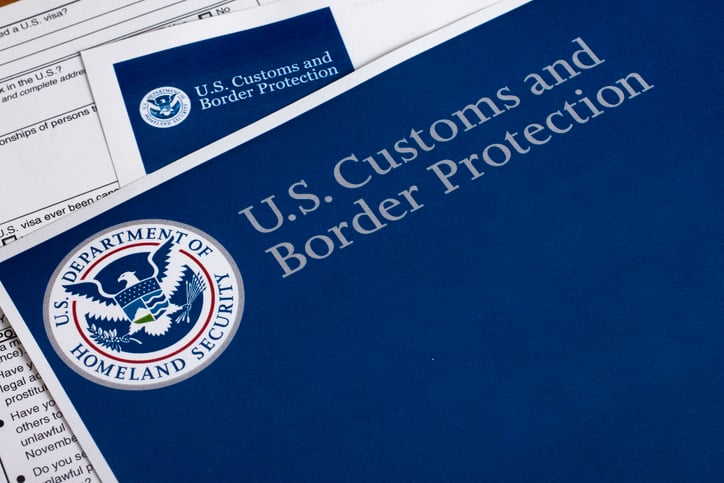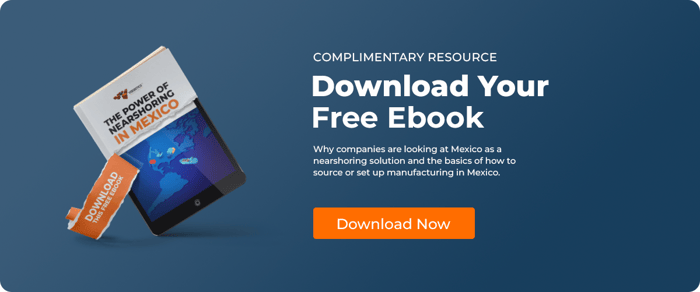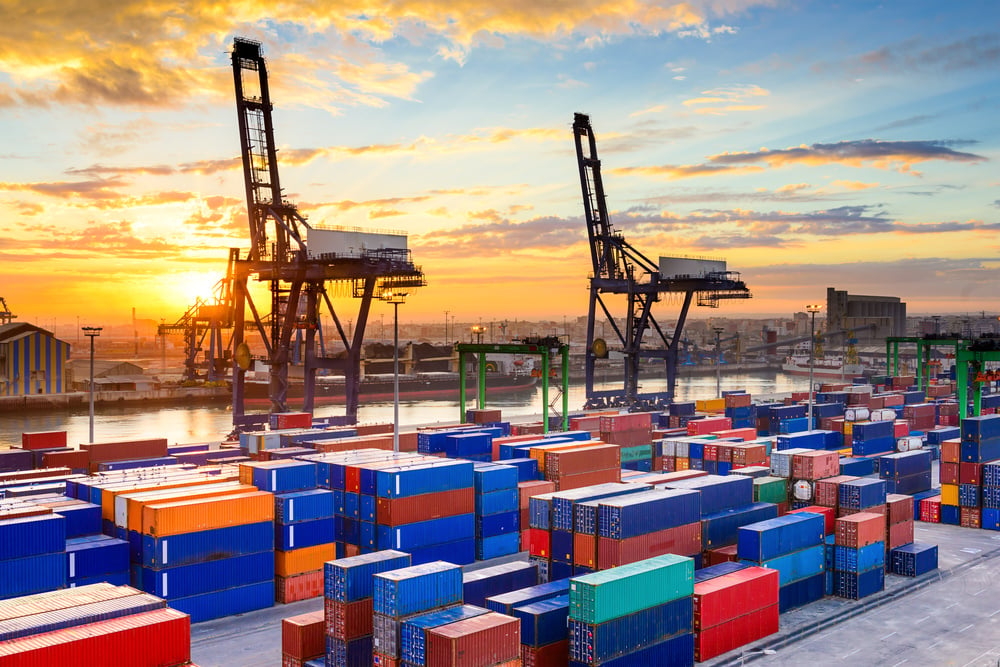Shipping to Mexico can be a complex process that requires careful planning, attention to detail, and compliance with customs regulations. One of the key aspects of successful Mexico shipping is ensuring that all the necessary documentation is in order, including the border crossing document, pedimento, and Form 7525-V.
In this article, we will discuss the importance of these documents for successful Mexico shipping, explain what they are, their purpose, and how businesses can ensure they are using these documents correctly and avoiding common pitfalls.
Shipping to Mexico Customs Requirement
Before we look into the specifics of the required documents, it's essential to understand the customs requirements for shipping to Mexico. Mexico has a complex customs regime that governs the import and export of goods. When shipping goods to Mexico, businesses must comply with various customs regulations and requirements, including customs declarations, tariffs, and taxes.
To meet the customs requirements for shipping to Mexico, businesses must have all the necessary documentation in order. Failure to comply with customs regulations can result in costly delays, fines, or even the seizure of goods. To avoid these risks, businesses must have a clear understanding of the required documentation for Mexico shipping.
Border Crossing Document
When it comes to U.S.-Mexico shipments, there are several essential border crossing documents that businesses need to be aware of. The first document is the border crossing document, which is also known as the Mexican Bill of Lading or the Mexican Customs Declaration. This document is required for all shipments crossing the Mexican border. It provides crucial information on the goods being shipped, the shipper, and the recipient. Additionally, it serves as proof of compliance with Mexican customs regulations.
Alongside the Mexican Bill of Lading, there are other important documents that facilitate the smooth processing of goods across the border. These include the Commercial Invoice, which details the value, quantity, and nature of the exported goods; the Freight Invoice for accounting of the cargo transportation charges; and the Inward Cargo Manifest, which lists all the items that are part of the cargo being transported.
Businesses should also prepare a Letter of Instructions for the freight carrier, a Material Safety Data Sheet for safety compliance, and a NAFTA Certification of Origin if the goods qualify under the NAFTA agreement. Additionally, a Packing Slip should accompany the shipment to verify the contents of the packages, and the Pedimento, which is the official Mexican customs form. Lastly, the Shippers Export Declaration, which is required for shipments exceeding a certain value, must be filed.
Understanding and preparing these documents in advance will ensure compliance with both U.S. and Mexican customs regulations, facilitating a smoother and more efficient border crossing process.
Pedimento
Another vital document for Mexico shipping is the Pedimento. This customs declaration provides detailed information on the goods being imported or exported, including the value of the goods, their country of origin, and the applicable tariffs and taxes. The Pedimento is a mandatory requirement for all imports and exports in Mexico, and it must be submitted to the customs authorities before the goods can be cleared for entry or exit.
Pedimento comes in different types, depending on the nature of the shipment. For example, there is a Pedimento Simplificado, which is a simplified customs declaration for low-value shipments, and there is a Pedimento de Importación, which is a detailed customs declaration for imported goods. Businesses must ensure they use the correct type of Pedimento for their shipments to avoid delays or fines.
What is a Shippers Export Declaration and when is it required (Form 7525-V)?
A Shippers Export Declaration (SED) is a form, specifically Form 7525-V, that must be filed for shipments valued at more than US $2,500. Its primary purpose is to facilitate the collection of international trade statistics by the U.S. Department of Commerce. Form 7525-V provides information on the goods being exported, their value, and the country of destination. In addition to the value requirement, an SED is also necessary if licenses or license exemptions apply to the goods being exported. This information is used by the US government to compile export statistics and monitor trade flows. The SED can be filed in two ways: through a hardcopy submission at the point of export or electronically via the United States Census Bureau's Internet-based Automated Export System (AES). Both methods are acceptable for fulfilling the SED filing requirement.
Furthermore, it is important to note that the requirement to file an SED extends to all shipments valued in excess of US $2,500.00, regardless of the nature of the goods or commodities being shipped. This requirement underscores the role of the SED in maintaining accurate international trade statistics, which are crucial for the U.S. Department of Commerce's assessments and policy-making. Additionally, the option to file the SED electronically through the Automated Export System streamlines the process, making it more efficient for shippers to comply with export regulations while ensuring timely and accurate data collection.
Tips for Using Pedimento and Form 7525-V Correctly
Now that we've covered the required documents for Mexico shipping, let's explore some tips and best practices for using them correctly:
- Work with an experienced customs broker: Customs regulations in Mexico can be complex and ever-changing. Working with an experienced customs broker can help businesses navigate the process more effectively and ensure compliance with customs regulations.
- Ensure accuracy of information and documentation: All information and documentation provided on Pedimento and Form 7525-V must be accurate and complete. Businesses must double-check all the information before submitting the documents to avoid delays or fines.
- Proper completion and submission of forms: Pedimento and Form 7525-V must be completed and submitted correctly to avoid delays or fines. Businesses must ensure they use the correct type of pedimento, provide accurate and complete information, and submit the forms on time.
- Avoid common mistakes and pitfalls: Common mistakes when using pedimento and Form 7525-V include providing incomplete or inaccurate information, using the wrong type of pedimento, or missing deadlines. To avoid these pitfalls, businesses must stay up to date with customs regulations and seek guidance from experienced customs brokers.
What is a Commercial Invoice and what information should it include?
When preparing a Commercial Invoice for shipments to clear Mexican Customs, it is essential to ensure that all required information is included. Providing a Spanish translation copy of the invoice is necessary if it is not in the Spanish language, as mandated by Mexican Customs. The Commercial Invoice should contain several key pieces of information to facilitate the customs clearance process effectively.
First and foremost, the description of the item or items being shipped must be clear and accurate. This detailed description should provide ample information to allow customs officials to easily identify the nature and purpose of the goods being imported or exported. Additionally, stating the quantity of the items on the invoice is crucial for customs officials to verify the correct amount of goods being transported.
Moreover, a statement of value indicating the monetary worth of the shipped items is paramount. This value serves as the basis for determining customs duties and taxes, ensuring accurate assessments during customs inspections. Including the country of origin information is equally important as it provides customs officials with essential details about the goods' origin, enabling them to apply any necessary regulations or duties appropriately.
Furthermore, specifying where the purchase was made on the invoice helps customs officials understand the transactional history of the goods and ensures compliance with trade regulations. Lastly, disclosing the names and addresses of the buyers and sellers involved in the transaction is crucial for customs authorities to verify the legitimacy of the transaction and identify the parties involved accurately.
By incorporating all these details in the Commercial Invoice, you can expedite the customs clearance process and ensure a smooth shipment experience when sending goods to Mexico.
What is the purpose of the NAFTA Certification of Origin document?
The purpose of the NAFTA Certification of Origin document is to ensure that material inputs, assemblies, and finished goods receive preferential duty and tariff treatment as outlined in the North American Free Trade Agreement. This document serves as proof that the goods or products originated from one of the three NAFTA signatory countries, which include the United States, Mexico, and Canada. By presenting the NAFTA Certification of Origin to Customs, importers can claim the benefits and advantages offered by NAFTA's provisions.
How does a Packing Slip verify the contents of a shipment?
A Packing Slip functions by verifying the contents of a shipment. Its main purpose is to ensure that the items that have been sent from the shipper to the receiver are accurately recorded. This verification process involves comparing the information on the Packing Slip with that on the Commercial Invoice. By undertaking this comparison, discrepancies or errors in the shipment contents can be identified, allowing for any necessary corrections or clarifications. Ultimately, the Packing Slip serves as a vital tool in confirming that the documented contents of the shipment remain consistent and accurate between the shipper and the receiver.
How is the cost of freight calculated in an international transaction between the U.S. And Mexico?
In an international transaction between the U.S. and Mexico, the cost of freight is determined by adding the transportation charges to the value of the goods being shipped. This calculation is essential in accurately determining the VAT (Value-Added-Tax) that needs to be paid to the Mexican government. Furthermore, it is worth noting that companies holding an IMMEX certification enjoy a special privilege - they are exempt from paying VAT on goods that are temporarily imported into Mexico.
Working with a logistics consultant like Visigistics can help businesses ensure they use pedimento and Form 7525-V correctly and comply with customs regulations for successful Mexico shipping. At Visigistics, we specialize in cross-border logistics and can provide guidance and support for businesses looking to expand their operations in Mexico.
At Visigistics, we understand the complexities of cross-border logistics. We help our customers establish reliability in the supply chain process by providing expert guidance on customs regulations, document preparation, and logistics planning. Contact our team today to learn more about how we can help you with your cross-border logistics needs and ensure successful Mexico shipping.
Frequently Asked Questions:
Why is a Material Safety Data Sheet required for shipments of hazardous materials?
A Material Safety Data Sheet (MSDS) is required for shipments of hazardous materials to provide essential information that ensures the safe handling, movement, and storage of these materials. By including critical information on potential hazards, proper handling procedures, and emergency responses, the MSDS allows personnel to effectively manage and mitigate any threats posed by hazardous material shipments. This document is vital for increasing awareness, promoting safety, and minimizing risks associated with the transportation of hazardous materials.
What information does a Letter of Instructions typically contain in international trade between the U.S. And Mexico?
In international trade between the U.S. and Mexico, a Letter of Instructions, also referred to as "La Carta de Instrucciones" in Spanish, plays a crucial role. This document is vital as it includes essential information for the broker, carrier, and freight forwarder engaged in the trade transaction. Typically, a Letter of Instructions contains details that are crucial for the smooth processing of the shipment, such as specific instructions on how the goods are to be handled, important contact names, and telephone numbers of all parties involved in the trade. It essentially serves as a comprehensive guide outlining the necessary steps and information required to ensure a successful transaction between the trading partners.
What is the purpose of the Inward Cargo Manifest in the border crossing process?
The purpose of the Inward Cargo Manifest in the border crossing process is to serve as a critical document that licensed U.S. customs brokers use to pre-file commercial entries into the United States under the Border Cargo Selectivity system. This manifest is specifically tailored for each shipment and is essential for streamlining the clearance process at the border. It contains vital information about the goods being transported and is assigned a unique entry number for tracking purposes. Each manifest is meticulously prepared and printed by a licensed customs broker, who ensures that it meets all regulatory requirements.
Once the Inward Cargo Manifest is prepared, it is handed over to the driver of the trailer. The driver plays a pivotal role in transporting the shipment into the United States from the Mexican side of the border. Upon arrival at the commercial port of entry, the driver presents this document to clear U.S. Customs. This facilitates a smooth and efficient verification and clearance process, allowing the goods to move promptly into the United States. Ultimately, the Inward Cargo Manifest acts as a key tool in ensuring smooth and efficient movement of goods across the border while complying with relevant regulations and procedures. By detailing the specific roles of the customs broker and the driver, as well as the practical use of the manifest at the port of entry, the document’s critical importance in maintaining the flow of commerce and upholding border security is underscored.
Why is a basic knowledge of the main border crossing documents important for new participants in international trade?
Understanding the main border crossing documents is crucial for new participants in international trade because these documents play a vital role in facilitating the smooth flow of goods across borders. Having knowledge of these documents ensures compliance with regulations and laws governing international trade, which helps avoid costly delays and penalties. Additionally, familiarity with the required documents enhances efficiency in customs clearance processes, leading to more streamlined and successful cross-border transactions.
It is important to note, for example, that although trade between the United States and Mexico is free of tariffs and duties due to the North American Free Trade Agreement (NAFTA), this does not eliminate the need for comprehensive border crossing documentation. Despite the trade liberalization under NAFTA, the complexities of cross-border movements still require thorough documentation to ensure a seamless flow of commerce. Companies new to international trade, especially between these two neighboring and economically intertwined countries, should therefore possess at least a foundational understanding of the ten most essential border crossing documents that facilitate binational trade.
Overall, a basic understanding of border crossing documents is essential for new participants to navigate the complexities of international trade and establish successful trading relationships with neighboring countries. This foundational knowledge not only complies with legal requirements but also enhances operational efficiency and reduces potential friction at borders.
Why is a Commercial Invoice considered extremely important for border crossing into Mexico?
A Commercial Invoice is crucial for border crossing into Mexico because it serves as an essential document for customs clearance. Without this invoice, goods cannot be processed or admitted by Mexican Customs. The invoice must be presented with all necessary details such as descriptions and quantities of the items, their value, originating country, and purchasing location. Additionally, if the document is not originally in Spanish, a translated version must be provided. It also needs to include full names and addresses of both the buyer and seller. Ensuring all this information is accurately provided on the Commercial Invoice facilitates a smooth entry process into Mexico by adhering to the customs regulations.
What is the purpose of a Bill of Lading in international trade?
In international trade, the Bill of Lading serves multiple critical functions. It acts as a legal document granting the shipper and freight forwarder the authorization to transport goods. Beyond this, it provides specific directives necessary for both parties to handle and manage the shipment effectively. Importantly, the Bill of Lading details the nature and characteristics of the cargo being transported. Moreover, it assigns ownership of the shipment's contents to a designated recipient, thereby playing a key role in the governance and security of international trading operations.







